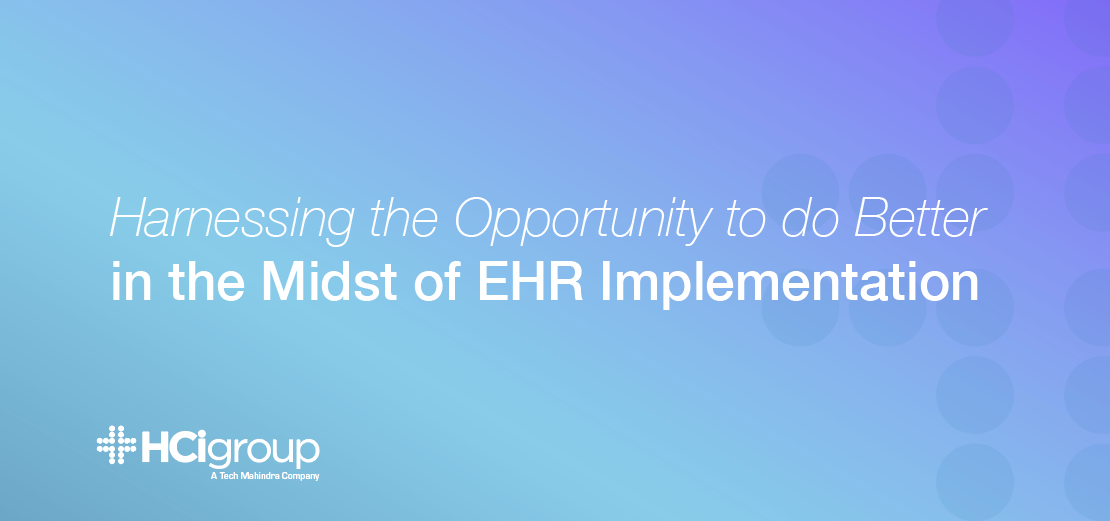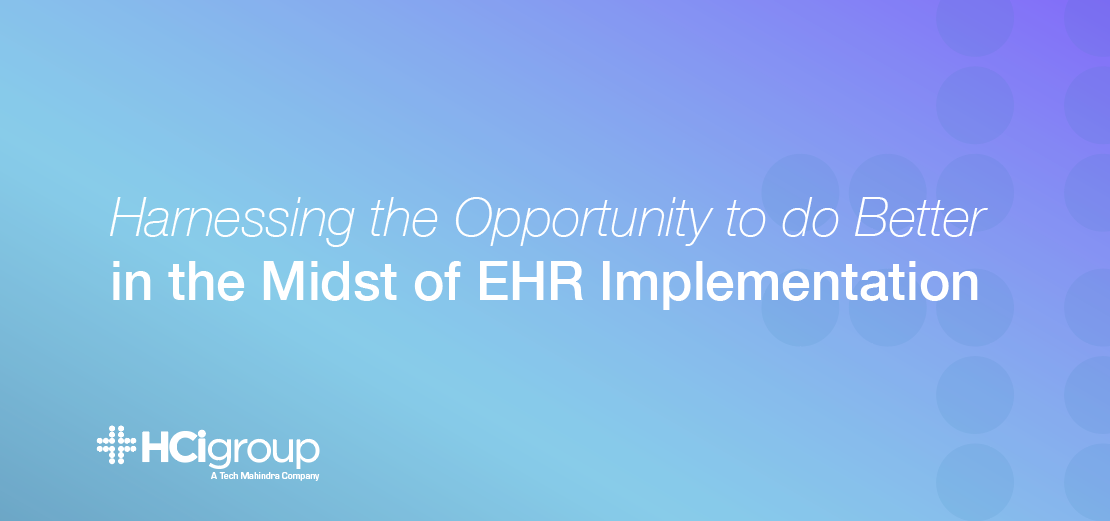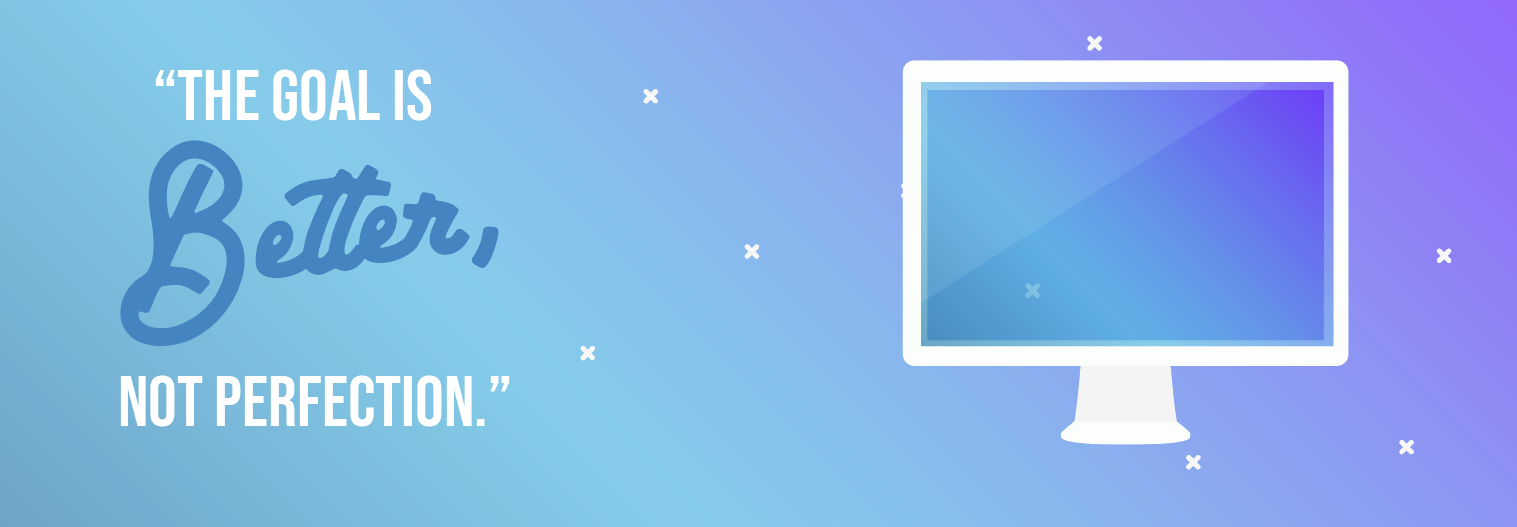Harnessing The Opportunity To Do Better In The Midst Of EHR Implementation


When a new EHR implementation is imminent for a health system or organization, we often see the proverbial troops preparing for healthcare technology that will basically replace existing tools and replicate current workflows. The C-Suite may have their well-defined list of expected ROI from the endeavor, but unless the same level of rigor is coming from the very staff who will daily use the Electronic Health Record, it’s our experience that many organizations end up swapping one tech vendor for another with little net gain (initially). The collective goal must be embracing change -- on the positive side -- to encourage buzz, buy-in, and better workflows on the other side of the project.
Let’s look at some of these dynamics in more detail to better understand how to harness the change associated with an EHR implementation for health organizations as an opportunity to do better.
Choose Your EHR Config Wisely
 Most EHR vendors -- from Epic to Cerner, NextGen to Meditech -- rely on insight from their customers to ensure the relevant modules are implemented and the right configurations set. This generally requires an Application Specialist or Nurse Manager (or the like) to provide an overview of existing systems,
Most EHR vendors -- from Epic to Cerner, NextGen to Meditech -- rely on insight from their customers to ensure the relevant modules are implemented and the right configurations set. This generally requires an Application Specialist or Nurse Manager (or the like) to provide an overview of existing systems,
processes, and workflows during kick-off to make the correct calls on what IT is invoked. While it would be easy enough to just stop here and count on the newness of the solution to encourage your administration, we can’t stress enough to value of taking a step back and looking at the big picture...here, now, before your solution has even been delivered.
The Value Of Healthcare IT Consultants As A Fresh Set Of Eyes
Ok, we’re biased: we think healthcare IT consultants are a vital resource for EHR
implementations. But one area where an outsider can be especially valuable is considering what workflows are required for the EHR build (including any interoperable or supporting IT systems). When you have internal resources
defining the process, they’re essentially working from a fairly narrow gaze (unless they’re specifically operating like a consultant and purposefully stay a bi
removed from the day-to-day). This isn’t a dig at those resources, but rather
a reality that can often result in a horizontal gain versus vertical post-implementation.
By bringing in fresh sets of eyes, you open up the possibility for streamlining, optimization, and efficiencies that will please even the biggest naysayer of change. Consultants in particular bring a lot of prior experience that keeps your team from having to reinvent the wheel, or find out the hard way that an expected improvement is very much not. You’ll also reap the benefits of existing relationships with many EHR vendors, as well as expertise on pitfalls to avoid and best practices for getting what you need when you need it (since that’s a two-way street).
Trim Some Fat Where You Can
Admittedly, this is a less-than-savoy visual, but the point is salient. When rethinking your healthcare IT solutions to support clinical workflows, it’s worthwhile to ask at each stage of integration a few questions of your stack:
- What purpose does this solution/tool serve?
- Is it truly providing value?
- Can we streamline/minimize failure points?
Introducing a new EHR can be a great time to evaluate existing ancillary systems and brainstorm with solutions architects whether there are opportunities in this process to consolidate. (In our experience, fewer vendors is rarely a bad thing...assuming they’re solid partners.) Just like we talked about with rethinking existing workflows, looking at the big picture of your IT environment can be a great way to finally ask, “Does anyone know why we still use this thing?”
Level Up: Power Meaningful Analytics With EHR Discrete Data
Cash used to be king, but I think any modern CTO or hospital executive will tell you that in healthcare, data is king. You can have your data team build dashboards until you’re swimming in stoplights and swimlanes, but if you don’t have the right data to drive them, you’d might as well be thumbing through outdated pie charts and graphs. Modern EHR systems offer incredible opportunities for amassing the kind of actionable data that can power a host of game-changing analytics and visualization tools for your entire health system.

It’s not uncommon to find an untapped data engine or neglected data warehouse during implementation projects, only to discover that the investment never took off because there was a lack of discrete data coming from connected systems to drive any real change. However, one of the biggest value propositions for a new EHR is the ability to build user-friendly workflows that will help capture that critical data, versus introduce clunky technology that inspires the some of most creative (yet frustrating) workarounds we’ve seen.
Leave Some Room For Growth At The Beginning
Early in the adoption phase, we’ve found it prudent to allow for some “give” in the EHR configurations delivered to end users. This doesn’t mean ditching well planned workflows at the first sign of trouble and forsaking all that great data just waiting to be harvested. No, it means leaving some strategic “outs” to allow for business as usual during the technology cut-over/roll-out. This may be setting soft versus hard requirements in the system, monitoring help desk tickets and rotating on the floor for feedback, and making space for some generalized options within fixed lists/fields. (An “Other” can go a long way in a pinch).
Allowing some breathing room in the new EHR build will make for a smoother adoption and set the stage for refinements based on widespread use (and feedback). The goal is better, not perfection, so don’t miss out on the chance for some serious wins in the midst of your EHR implementation project.
